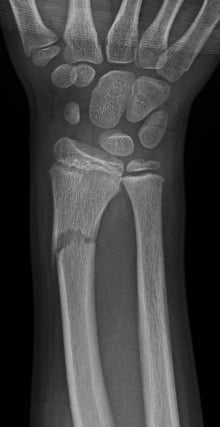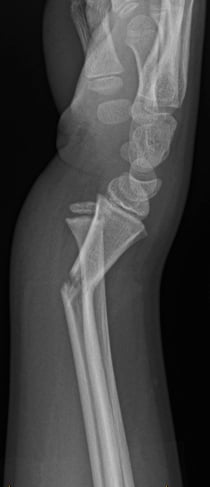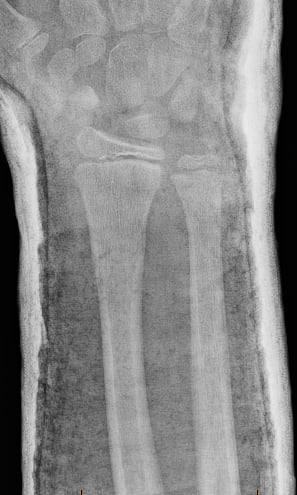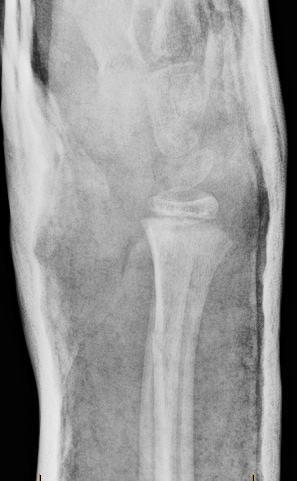Closed Reduction
Fracture Care at Children’s Mercy
Closed reduction, or resetting and restoring the bone alignment, is a procedure in which a trained member of the Orthopedic team will attempt to restore acceptable bone alignment without an incision or any tools entering the skin (hence the term “closed” since the skin is not penetrated).
Broken bones before reduction


X-rays of the right wrist. Image A shows the front view (anteroposterior); image B shows the side view (lateral). These images show a fracture of the forearm near the wrist (displaced distal radius fracture) before it is realigned (prereduction).
Closed reduction is always performed with sedation— medications that cause drowsiness, muscle relaxation, decreased pain and even short-term memory loss so your child won’t remember the procedure. Closed reductions are only performed at our Adele Hall Campus and Children’s Mercy Kansas locations due to the need for specially trained Emergency Department care team members to administer and monitor your child after these medications. Both our Emergency Departments have physicians, orthopedic surgery residents, nurse practitioners and physician’s assistants at both locations who are readily available around the clock for these procedures.
If your child needs a closed reduction for a fracture or a joint dislocation such as a shoulder, elbow or ankle dislocation, the Emergency Department physician will administer the medications with an IV after waiting sufficient time for any recent food or drink to safely empty from the stomach. The Orthopedic staff member will then perform the reduction and use a portable x-ray machine to take x-rays and check the progress and final result.
Once the procedure is completed, the affected arm or leg will then be wrapped in a plaster cast, which helps maintain the correct position. If the reduction is for a shoulder, your child will typically be placed in a shoulder sling or shoulder immobilizer. Your care team will discuss instructions for proper care of the cast and pain control.
Since injuries that require reduction are inherently less stable than those that don’t, you will typically be scheduled to follow up in our Orthopedic Clinic within 1 to 2 weeks. At that appointment, the orthopedist will take x-rays to check the alignment and discuss further treatment with you. Occasionally, closed reduction is not enough to achieve appropriate alignment and surgery is necessary. However, we always make every effort to realign your child’s fracture without surgery whenever possible.
Bone alignment after closed reduction


X-rays of the right wrist. Image A shows the front view (anteroposterior); image B shows the side view (lateral). These images show the repair over time (interval reduction) of the fracture of the forearm near the wrist (distal radius fracture).
